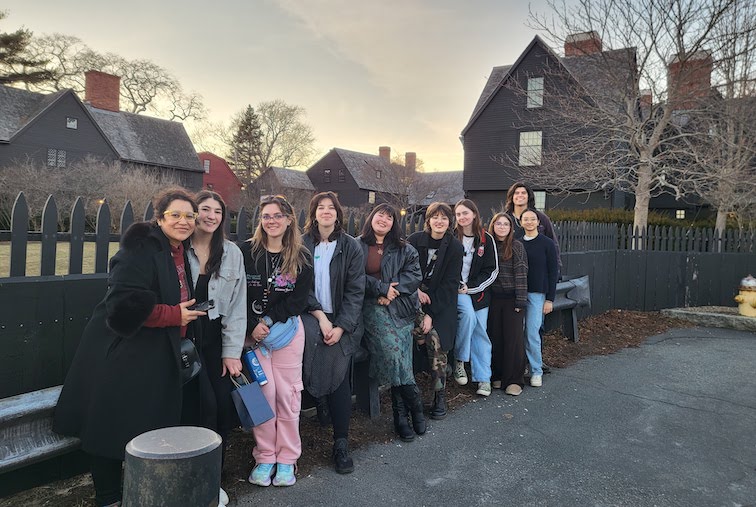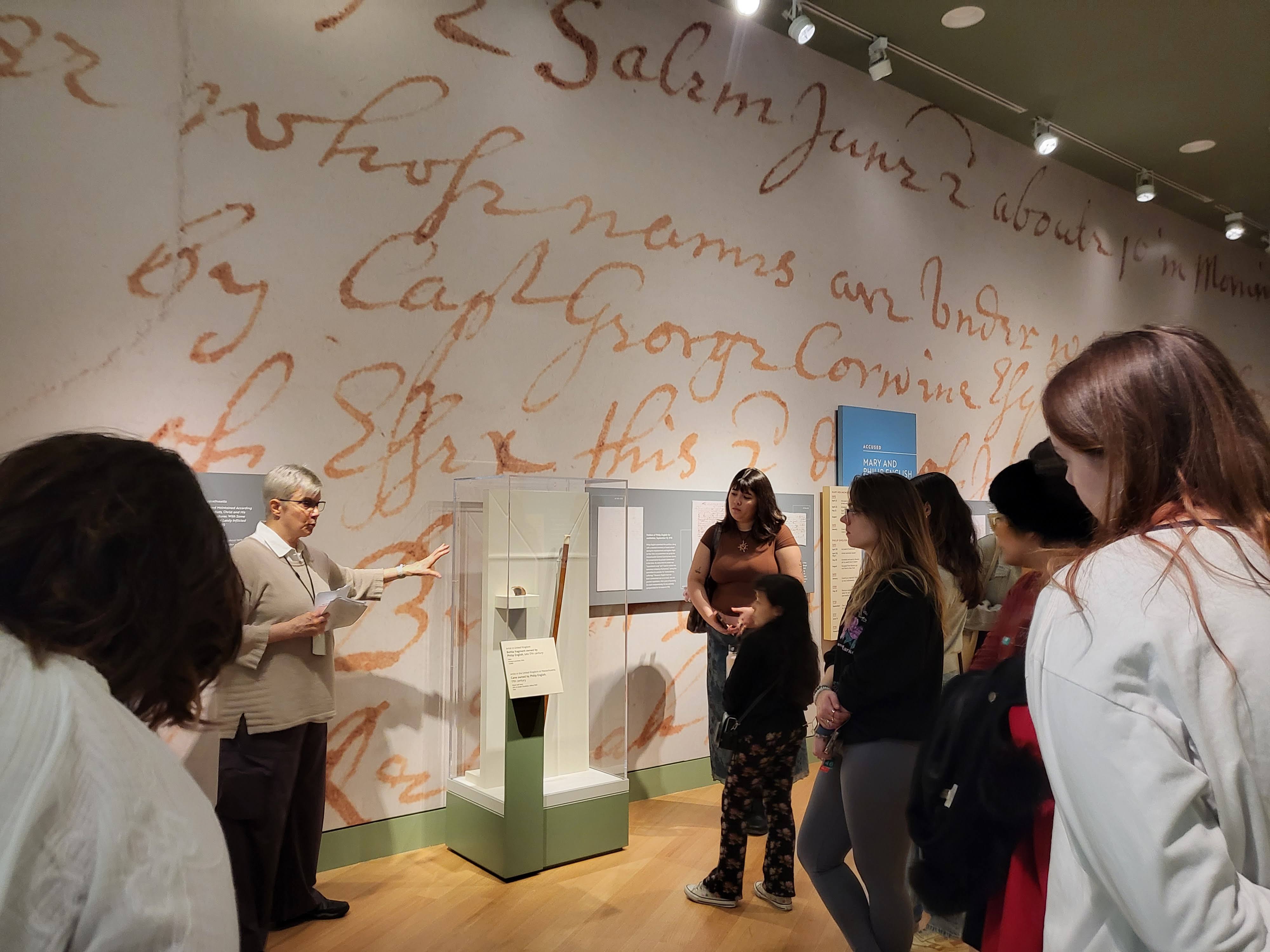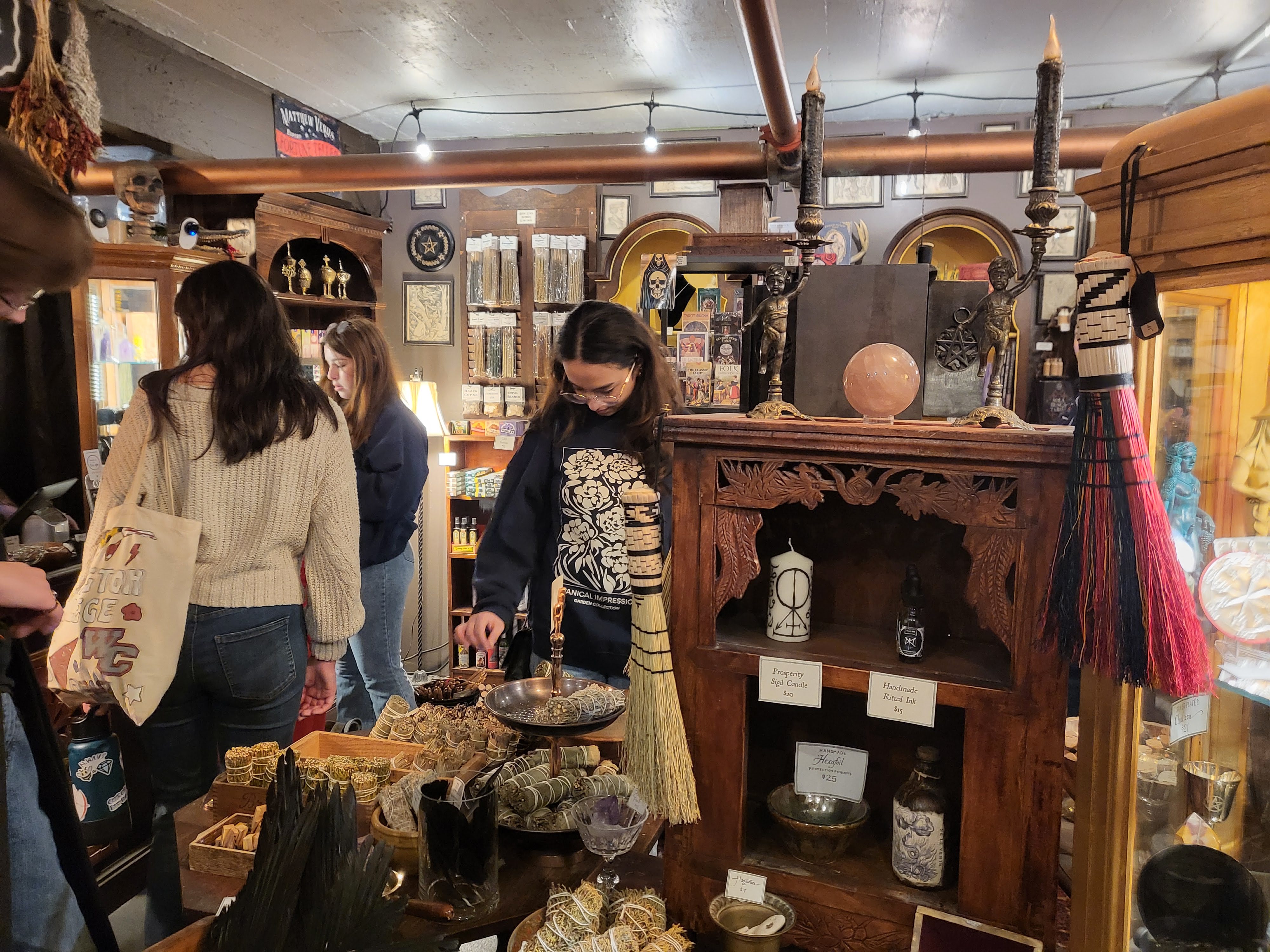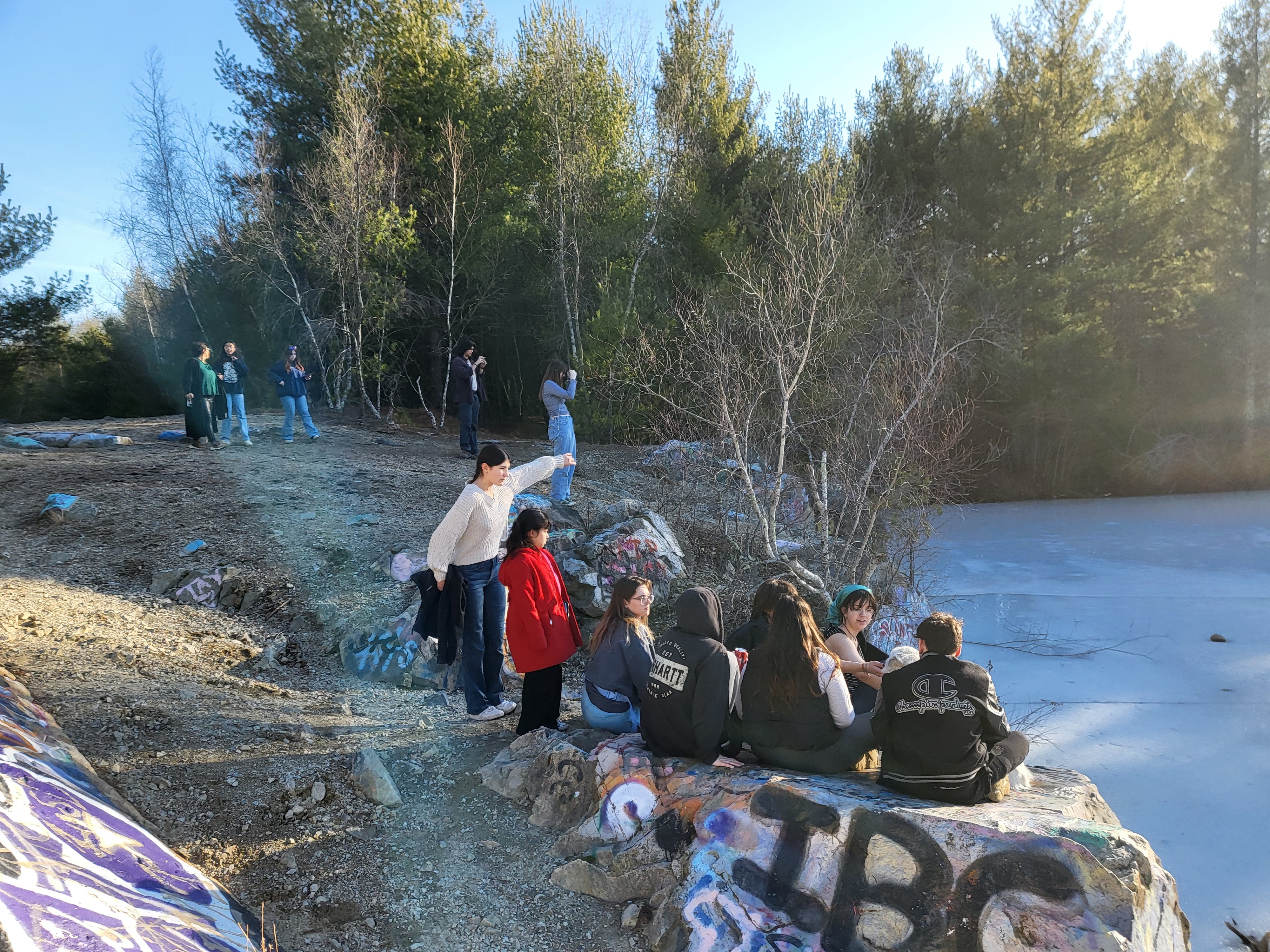Examining Tragic and Magical Histories
An experiential learning trip to Salem, Massachusetts allowed students to explore the historical and present intersections between nature, spirituality, and society.

A small group of students who were enrolled in a course this spring titled “Witches, Healers, and Shamans” expanded their understanding of past, present, and place by visiting the town perhaps most synonymous with the word “witch.” That three-day experiential learning trip over spring break took the students to Salem, Massachusetts, where they visited graveyards, museums, forests, and met with real, modern-day witches in an effort to dive deeper into the history of witches, their place in society in history, and how their persecution and examination has shaped the modern narrative on their community.
Facilitated by Vicki Barnett-Woods, associate director for experiential learning and programs at the Washington College Starr Center for the Study of the American Experience, the trip was the first in what Barnett-Woods hopes will become an annual spring break collaboration between the Starr Center and professors at Washington.
“The idea of being able to think through experiential learning in the humanities outside of the classroom is something that's really interesting to me, and so I thought of this idea of having a spring break component wherein I would collaborate with...an interested faculty member on developing a unit integrated within a course [that] would have this experiential component to it,” Barnett-Woods said.

The “Witches, Healers, and Shamans” course, taught by Professor of Spanish and Black Studies Elena Deanda-Camacho, was a crossover between Hispanic Studies and Environmental Studies. The archive-centered course focused on ecofeminism and allowed students to learn about the accused women of history through the eyes of their persecutors. Before the trip, students read historical documents including demonological texts and legal court papers related to the Salem witch trials.
Deanda-Camacho said that traveling to Salem “made something that seemed very far away from us, like all the witches of the 17th century” feel not-so-distant. “I think for everyone there was something completely transforming about going to the places that you just read about,” she said.
Thinking about the healers who once lived and worked in the houses in which they were standing; imagining the women of the past who once roamed the streets that they walked on in the present; and reflecting on the places where figures that they read about in class saw their death allowed students access to powerful, place-based insights that enhanced their understanding of course content, Deanda-Camacho said.
“One of the big things we talked about at the start of the semester as well as right before the trip was the difference between the fantasy and the reality, what was exaggerated versus what actually happened and what it really looks like,” KT Pagano '25 said.

Barnett-Woods thematically organized the trip around three themes. The first day, titled “The Dead,” was spent in Boston. It included a visit to Copp's Hill, the burial ground of the Mathers, a colonial family that participated in the witch trials as religious and political figures, as well as an exploration of the crypts of Old North Church to study Anglican burial traditions.
The second day, “The Memories,” brought students to informational sites in Salem ranging from the Peabody Essex Museum to well-known tourist exhibits. In a comparative study between scholarly and popular displays of history, students were able to distinguish and discuss contrasts in how stories are told and how information is presented to different audiences.
The final day, “The Experiential,” focused on hands-on activities that allowed students to “embody” the life of a witch, including learning about medicinal herbs, astrology, and Wicca spirituality in a workshop that culminated with students creating their own protection charms.
As the three-day experience was bookended by a day of travel on each end, for a total of five days together, students and professors both felt that train rides, group meals, and in-between conversations allowed them to bond in ways that made in-class discussions more meaningful and engaging after the trip.
Deanda-Camacho said that an unplanned hike through a swampy forest in Salem was a “mix of worry and wonder,” which left an impression on students about the beauty found in uncertainty.

“I was just full of joy because I saw them having such a great time enjoying each other's company, enjoying nature, like really being in oneness,” Deanda-Camacho said. “It was a mystical moment.”
Reflecting on the trip, students said that experiential learning opportunities make the classroom come to life in useful ways. For Danielle DiDomenico '28, visiting the memorial at the site where accused witches were hung allowed her to expand her empathy for historical people and to develop a greater sense of place.
“Going to Salem made the events feel real, not just names and dates in a textbook, but stories of actual human beings caught in fear and misunderstanding,” DiDomenico said. “I think experiential learning is important because you are able to learn about something in the classroom and then take what you learn and be able to see it and apply it.”
Visit the Experiential Learning webpage to learn more about these and many more opportunities for students to learn by doing at Washington College.
- Logan Monteleone '26